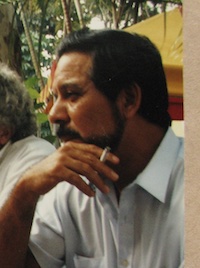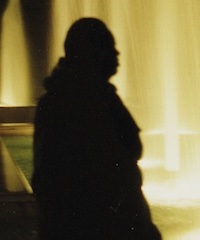Stories
National Culture of Peace Programmes
Missions for the culture of peace
The failure of the culture of peace programme
Brothers for Peace
* * *
My work on national culture of peace programs in El Salvador and Mozambique would not have been possible without the close collaboration of two men who became like brothers to me, Francisco Lacayo Parajon in El Salvador and Noel Chicuecue in Mozambique.

I met Francisco in the group that met in May, 1993, in Costa Rica, hosted by the UNESCO representative for the region who was Juan Chong. Francisco came from Nicaragua where he had been in charge of the great literacy campaign of the Sandanistas after they won the civil war. He had supervised hundreds of literacy volunteers who went into the remote mountains and valleys with their tool which was teaching people to read and write. Quickly, the two of us found common ground in our political views. Like me and many others active in the culture of peace, he had been radicalized in the 1960's global movement against the war in Vietnam. Whereas I spent 1968 in Italy, he had spent 1968 with Lanzo del Vasto in France. Symbolically, we went together to the cinema to share the wonderful biography of Malcolm X that had just been produced by Spike Lee. From Costa Rica, we went to work in El Salvador, where I found that Francisco was a superb organizer, able to work with both the revolutionary activists of the FMLN and the conservative officials of the El Salvador government. The work he did to establish the culture of peace program of El Salvador is described in the article we published along with Mirta Lourenco from our Paris unit for the culture of peace. The article includes some of the important conceptual formulations that he made for a global movement for the culture of peace, modeled on the movement for sustainable development. Here is a more extensive essay by him. By the way, Francisco was also a poet. |
When I went to Mozambique in 1994 to develop a national culture of peace program, I was hosted by the UNESCO National Commission and its very active president, Graca Machel. The widow of the Mozambican revolutionary leader, Samora Machel, she was a remarkably effective in her own right as the organizer of the Organization of Mozambican Women. In order to make an effective program, she assigned Noel Chicuecue to work with me.

Noel was born in Zimbabwe, near the Zambesi dam and the Mozambican border on Christmas day, which explains the origin of his name. Along with Zuber Ahmed, whom I also came to know, he taught in a school in the nearby Mozambican province of Nampula. After the successful revolution led by Samora Machel, Noel became the education director of the province of Nampula where he had the help of Russian and Cuban teachers who had come to aid the revolution. Noel and I discussed our common appreciation for the great Russian psychologist Vygotsky. To understand how effective he was as an educator and organizer, it was not possible for me to walk down a street in Maputo with him without meeting someone who knew him and stopped us to talk with him. While it was the film of Malcolm X that solidified my friendship with Francisco, it was our visit to the Museum of the Revolution in Maputo that solidified my friendship with Noel. There were sections devoted to education, to health care and to agricultural development, but the cases were filled with weapons. Tears came to my eyes when I read Samora Machel's poem to his first wife, Josina who was martyred in the revolutionary struggle. I arranged for Noel to attend a workshop about conflict resolution in Mombasa, Kenya, hosted by the great specialists, John Paul Lederach and Hizkias Assefa and attended as well by my friend from Burundi, Nestor Bidadanure. I treasure the letter, addressed to me as "my brother" that Noel sent me from Mombasa. Working together, Noel and I met with writers, musicians, veterans, journalists, women activists and educators from FRELIMO and RENAMO, the two enemies of the civil war, in order to develop culture of peace projects, as summarized here. But most remarkable was his work in slums outside of Maputo where a million refugees lived without good water or sanitation or police protection. Their "justice" was to burn a tire around neck of those they considered a criminals. Among the criminals were South Africans who came to kidnap children to kill them and sell their organs on the black market. Since I was white like them, Noel warned me not to get out of the car when we drove to his destination, a community center that he had helped to organize. |
Over the years since I left UNESCO I lost touch with Francisco and Noel. I heard about Francisco from our mutual friend Skye Stephenson (author of the wonderful novel Jade) who met him when he was the UNESCO representative in Cuba. She told me that he then opened a restaurant on an island in the big lake in the middle of Nicaragua. As for Noel, he passed away sometime around 2010, but since I have been in touch with his daughter Noela, who follows in his footsteps as an organizer in Mozambique.
 |
Stages
1986-1992
Fall of Soviet Empire
1992-1997
UNESCO Culture of Peace Programme